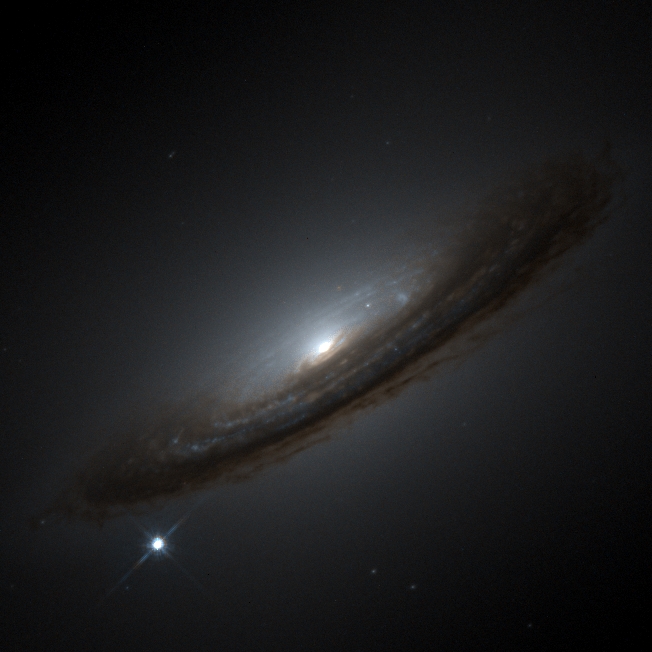 Supernovae are among the most spectacular events in the Universe. They are stellar explosions where in a very short time a huge amount of kinetic energy (~1051 erg) is released, 1049 erg of which is radiated. Supernovae are visible for a short time (several weeks to months) before fading from view. Stellar material is expelled at a very high velocity (of up to about 10% of the speed of light), generating a shock wave in the interstellar medium, producing an expanding shell of gas and dust called supernova remnant.
Supernovae are among the most spectacular events in the Universe. They are stellar explosions where in a very short time a huge amount of kinetic energy (~1051 erg) is released, 1049 erg of which is radiated. Supernovae are visible for a short time (several weeks to months) before fading from view. Stellar material is expelled at a very high velocity (of up to about 10% of the speed of light), generating a shock wave in the interstellar medium, producing an expanding shell of gas and dust called supernova remnant.
Supernovae produce a great proportion of cosmic rays, generate gravitational waves and gamma-ray bursts, leave compact remnants; the heavier elements produced from nucleosynthesis processed during the stellar life and in the SN explosion enrich the interstellar medium, whilst the shock waves produced may trigger star formation.
Figure 1: SN 1994I in NGC 4526 [Credit: Credit NASA/ESA]
Supernovae are in general triggered by two explosion mechanisms:
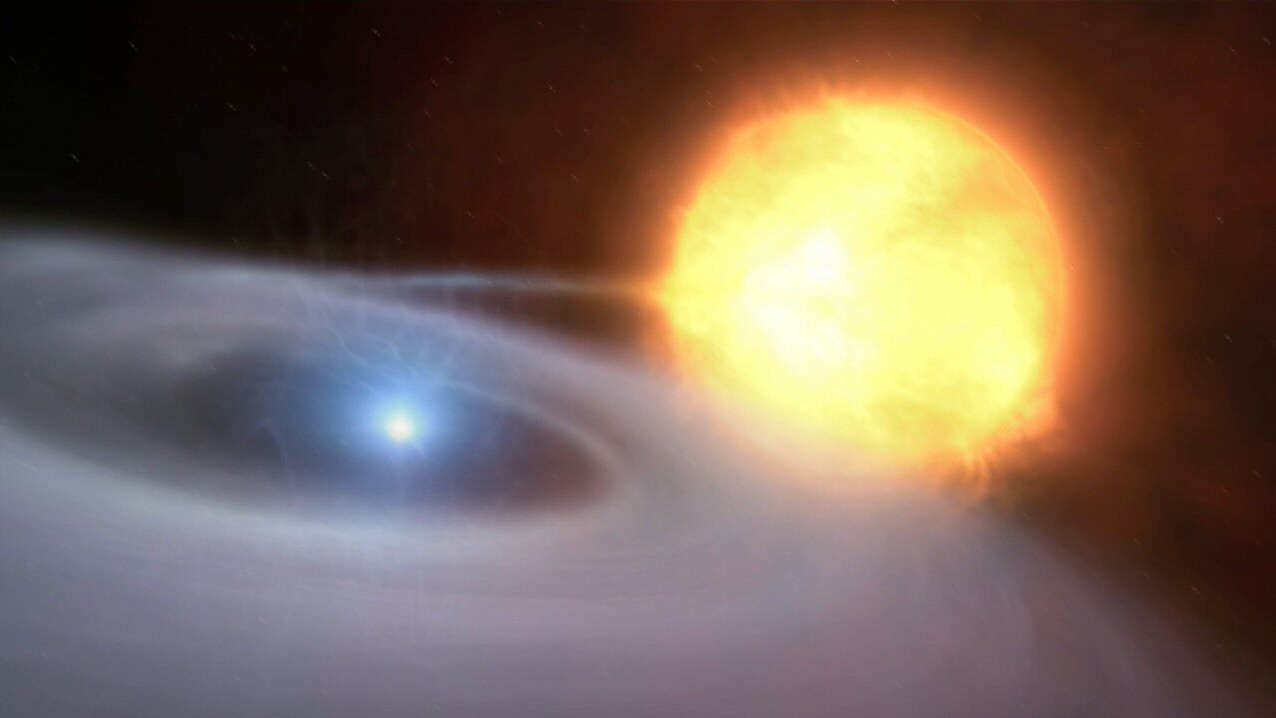 1. The runaway nuclear fusion in a degenerate star (thermonuclear supernova). In this case, a white dwarf (WD) in a binary system accumulates material from a companion star, either through accretion or via a merger, reaching the Chandrasekhar mass limit (~1.38 solar masses). This allows the core temperature of the WD to grows, igniting the fusion of carbon, and triggering the thermonuclear fusion runaway. This completely destroys the star, leaving a shell-like remnant.
1. The runaway nuclear fusion in a degenerate star (thermonuclear supernova). In this case, a white dwarf (WD) in a binary system accumulates material from a companion star, either through accretion or via a merger, reaching the Chandrasekhar mass limit (~1.38 solar masses). This allows the core temperature of the WD to grows, igniting the fusion of carbon, and triggering the thermonuclear fusion runaway. This completely destroys the star, leaving a shell-like remnant.
Figure 2:Illustration of a white dwarf accreting mass by stripping its non-degenerate companion [Credit: ESO/Kornmesser]
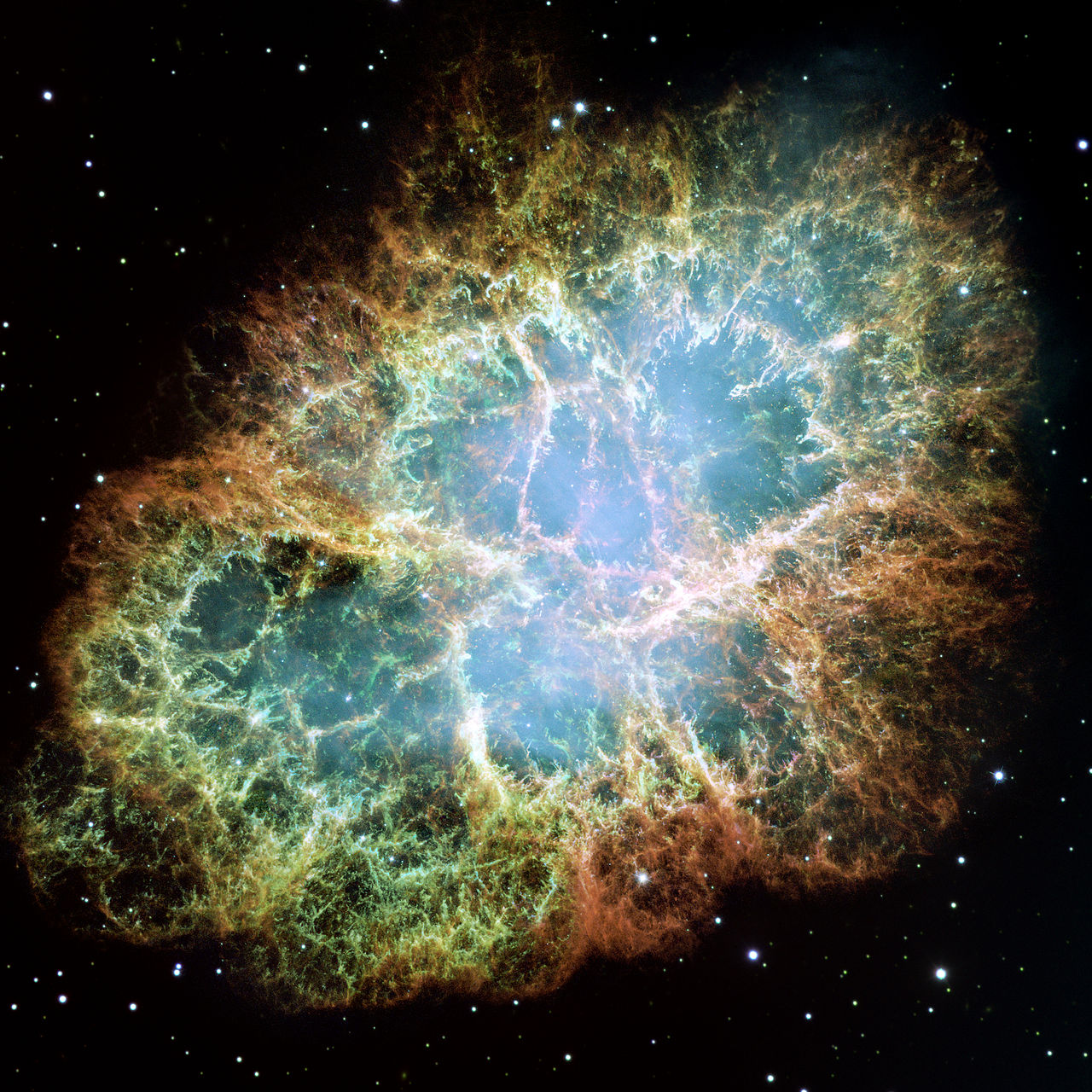 2. The gravitational collapse of the core of a massive (> 8 solar masses) star (core-collapse supernova). When the iron stellar core collapses, 1053 erg of binding gravitational energy are released (mostly radiated via neutrino burst); 1% of this energy powers the shock front that allows the stellar mantle to be expelled. This explosion leaves a compact degenerate core (a neutron star or a black hole) and an irregular gaseous remnant (called plerion, like the famous Crab Nebula).
2. The gravitational collapse of the core of a massive (> 8 solar masses) star (core-collapse supernova). When the iron stellar core collapses, 1053 erg of binding gravitational energy are released (mostly radiated via neutrino burst); 1% of this energy powers the shock front that allows the stellar mantle to be expelled. This explosion leaves a compact degenerate core (a neutron star or a black hole) and an irregular gaseous remnant (called plerion, like the famous Crab Nebula).
Figure 3: Crab Nebula, HST image [Credit: Credit NASA/ESA]
Basic supernova classification criteria were introduced by Fritz Zwicky in 1941, and revised/refined in the following decades. Current classification scheme is primarily based on the observed characteristic of early phases spectra and, secondarily, to the light curve properties. The traditional classification scheme identifies different SN types of the basis of the presence/absence of individual spectral features:
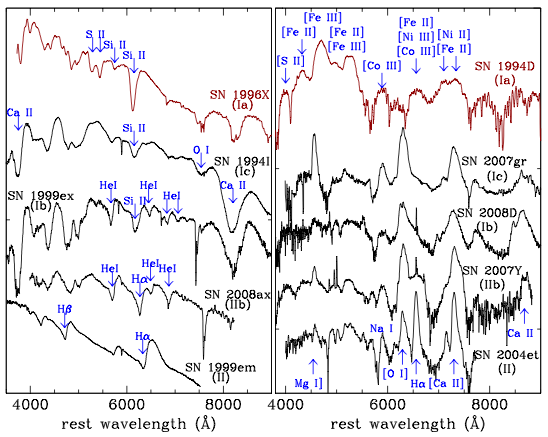
- SNe Ia: No H and He I lines; they show strong Si II and S II lines.
- SNe Ic: No H and He I lines; they show weak Si II lines, strong O I and Ca II lines.
- SNe Ib: No H lines; they show strong He I lines.
- SNe II: The spectra show H lines.
Figure 4: Comparison of spectra of different SN types. Left: photospheric spectra. Right: nebular spectra. Image from Pastorello 2012m MSAIS 19, 24
In addition, Type II SNe are divided in sub-types on the basis of further spectral properties, and on the characteristic of their light curve.
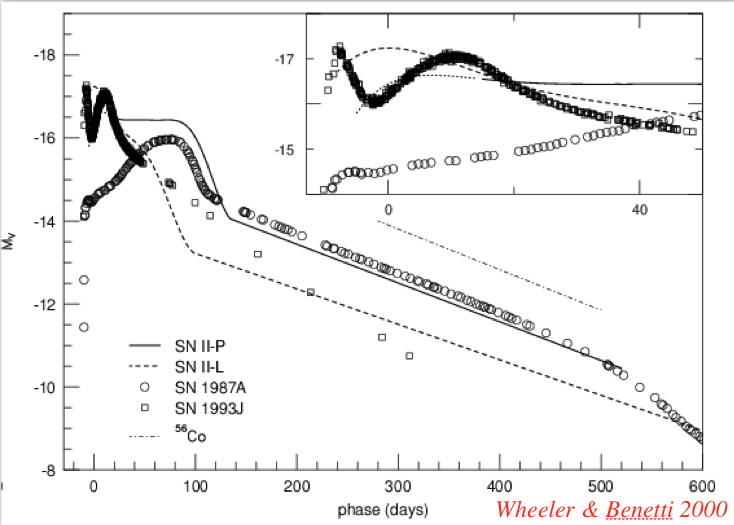
- SN IIP: Broad H lines, with a light curve showing a long phase of constant luminosity, called "plateau".
- SN IIL: Broad H lines, with a light curve showing a linear decline after peak.
- SN IIb: Broad and weak H lines, strong He I lines, light-curve similar to those of Type I SNe.
Figure 5: Comparison of light curve of Type II supernovae from Wheeler & Benetti (2007), showing the differences among Type II sub-types.
However, some transient events show much narrower lines than traditional supernovae, with prominent lines in emission. These emission features are interpreted as the signature of the presence of a slow-moving, photo ionized circumstellar medium.
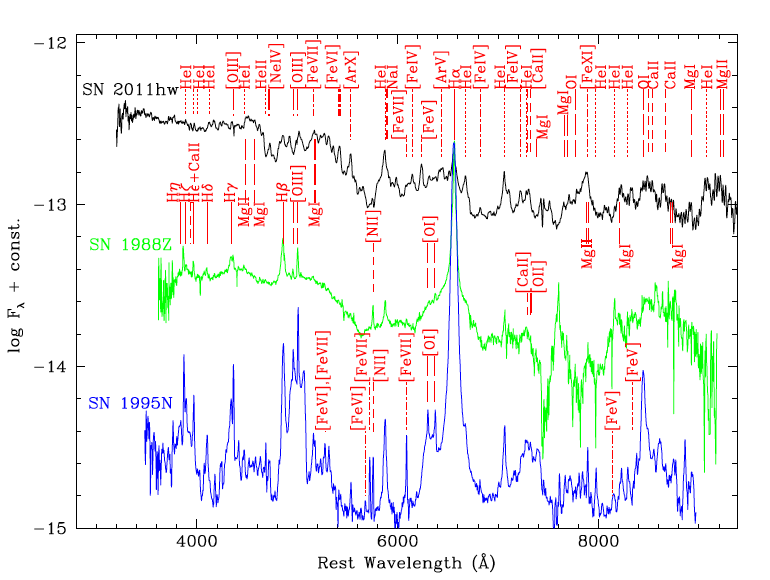
- SN IIn: Narrow H lines in the spectra, sometimes superposed on broader multiple components; light-curves are often slow-evolving.
- SN Ibn: Weak or no H lines in the spectra, but narrow He I lines in emission.
- SN impostors: Their spectra are similar to those of SNe IIn, but these objects are faint and fast-evolving. They are non-terminal stellar explosions, similar to the eruptions of Luminous Blue Variables.
Figure 6: Comparison of spectra of interacting supernovae and line identification (from Pastorello et al. 2014). Two SNe IIn (SN 1988Z and 1995N) and a SN Ibn (SN 2011hw) are shown.
While this scheme worked quite well until a few years ago, the new panoramic surveys discovered new types of transients that do not match this classification scheme. These include a few very weak but also very luminous transients. The diagram shown below, as proposed in Turatto, Benetti & Pastorello (2007), includes many of the new types of stellar explosions, although not yet the so-called fast-and-faint transients, neither Type I and II Super-Luminous SNe.
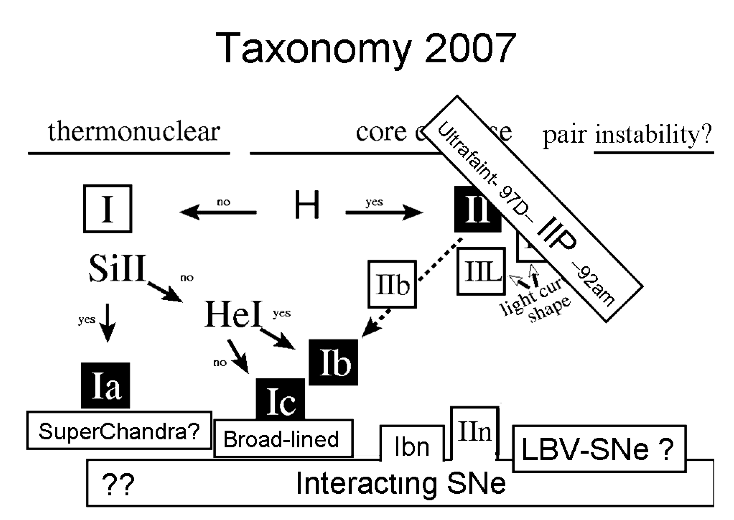
Figure 7: Illustration from Turatto, Benetti & Pastorello (2007), showing a preliminary classification scheme including new types of transients.